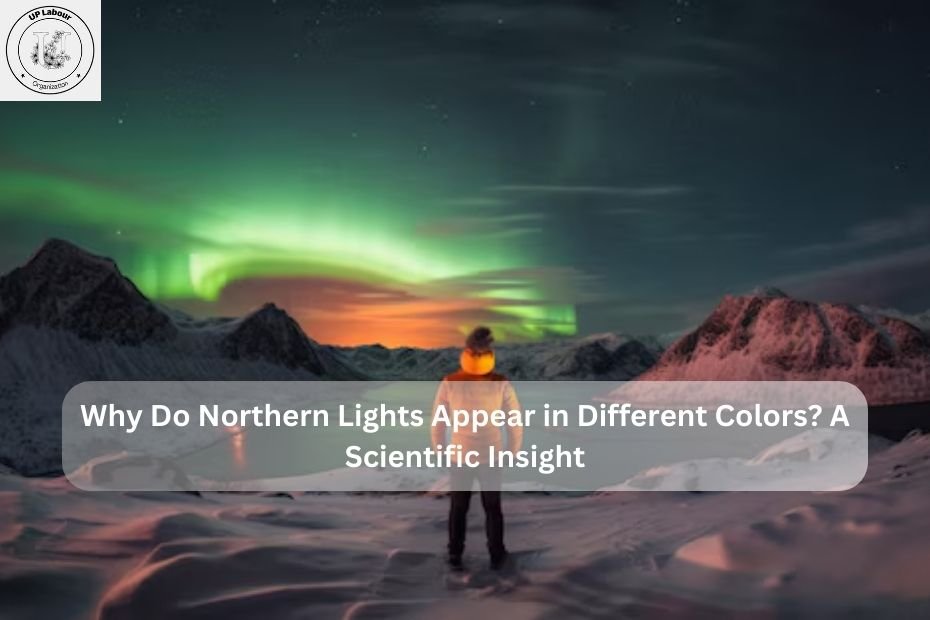The Northern Lights, or Aurora Borealis, are a breathtaking natural phenomenon that dance across the night sky, capturing the imagination of everyone fortunate enough to witness them. While many people are drawn to their beauty, few understand why these lights appear in various colors. In this article, we will delve into the science behind the colors of the Northern Lights and explore the factors that contribute to this mesmerizing display.
What Are Northern Lights?
Before we get into the colors, let’s quickly recap what the Northern Lights are. The Northern Lights occur when charged particles from the sun collide with gases in Earth’s atmosphere. This interaction creates light, which appears as vibrant colors shimmering in the sky. While the phenomenon is most commonly associated with regions near the Arctic Circle, like Alaska, Canada, and northern Scandinavia, it can occasionally be seen at lower latitudes during periods of high solar activity.
The Science Behind the Colors
The color of the Northern Lights is primarily determined by two factors: the type of gas involved and the altitude at which the interactions take place. Let’s break these down:
1. Types of Gases
The Earth’s atmosphere is composed of several gases, primarily nitrogen and oxygen. Each of these gases contributes differently to the colors we see in the Northern Lights.
- Oxygen: This gas plays a crucial role in creating the green and red hues associated with the Aurora. At altitudes of about 120 kilometers (around 75 miles), excited oxygen can emit a bright green light. This is the most common color seen in the auroras and is often the first one that catches your eye when you gaze at the night sky.At higher altitudes, specifically above 240 kilometers (around 150 miles), oxygen can produce red light. This red color is less common but can create stunning visuals when it appears alongside the more frequent green.
- Nitrogen: This gas is responsible for producing the purples and blues in the auroras. When nitrogen molecules are excited, they can emit light in various shades, including a soft violet. This happens at lower altitudes, typically below 100 kilometers (about 62 miles). The interaction of nitrogen with the solar wind can also create a reddish-blue color, adding to the spectrum of lights visible during an aurora.
2. Altitude
The altitude at which these gases are excited plays a significant role in determining the colors of the Northern Lights. As we discussed earlier, oxygen emits different colors depending on its altitude:
- Lower Altitudes (up to 120 km): At these heights, oxygen is primarily responsible for producing the brilliant green that dominates many auroras.
- Medium Altitudes (around 120–240 km): This range is where the vibrant greens continue, but the chances of reds and other hues become more prevalent.
- Higher Altitudes (above 240 km): Here, oxygen can create those beautiful reds, while nitrogen is more active in producing blues and purples.
Solar Activity and Color Variation
The sun is not just a distant star; it’s a powerful source of energy that significantly affects our planet. The intensity of solar activity, such as solar flares or coronal mass ejections (CMEs), can influence the colors of the Northern Lights.
When solar activity is high, more charged particles are released into space, increasing the likelihood of interactions with the Earth’s atmosphere. During these events, auroras can appear more vibrant and expansive, often showcasing a wider range of colors. In fact, during strong geomagnetic storms, you might even see unusual colors not typically associated with auroras, such as pink or yellow.
The Role of Geomagnetic Storms
Geomagnetic storms occur when solar wind interacts strongly with the Earth’s magnetic field. These storms can cause the auroras to extend further south, allowing more people to experience them. During intense storms, the auroras can become incredibly vivid, with a rich palette of colors ranging from bright greens to deep reds and purples.
The unpredictable nature of these storms means that every aurora can be a unique spectacle. One night, you might witness a brilliant green display, while the next could present a mesmerizing swirl of purples and reds.
Cultural Significance of the Colors
For many cultures, the Northern Lights have held significant meaning throughout history. The colors of the auroras often inspired legends and myths, reflecting the beliefs and values of the people who witnessed them.
- Green: Often viewed as a sign of hope and renewal, green is the most common color and symbolizes nature and growth in many cultures.
- Red: This color is sometimes associated with strong emotions, such as passion or anger. In certain traditions, it was seen as an omen or a message from the gods.
- Purple: Known for its royal connotations, purple often symbolizes luxury, ambition, and power. It is sometimes seen as a mystical color, associated with magic and the unknown.
The Experience of Viewing the Northern Lights
While understanding the science behind the colors of the Northern Lights is fascinating, experiencing them in person is truly unforgettable. Many people travel great distances to witness this natural wonder, and it’s not just about the colors; it’s about the entire experience.
Tips for Viewing
- Choose the Right Time: The best time to see the Northern Lights is during the winter months when nights are longest and skies are darkest. Late fall to early spring is ideal.
- Find a Dark Location: Light pollution can hinder your view. Seek out areas far from city lights, like national parks or rural locations.
- Check the Forecast: Websites and apps can help predict aurora activity. Look for forecasts that include geomagnetic activity levels.
- Be Patient: Sometimes the lights can be elusive. Be prepared to wait, and bring warm clothing and snacks for comfort.
The Awe Factor
When you finally see the Northern Lights, the experience can be overwhelmingly beautiful. The lights swirl, shift, and dance across the sky, and you may find yourself feeling a deep connection to nature. It’s a moment of wonder that reminds us of the beauty and complexity of our planet.
Conclusion
The Northern Lights are more than just a beautiful display; they are a stunning reminder of the intricate relationship between the Earth and the sun. The colors we see are a result of scientific phenomena involving gases, altitude, and solar activity. Each aurora is unique, shaped by various factors that create its mesmerizing dance of colors.
Whether you’re an experienced aurora chaser or someone who has yet to witness this incredible spectacle, understanding the science behind the colors of the Northern Lights can deepen your appreciation for this natural wonder. So, if you ever find yourself under a starry sky filled with vibrant greens, purples, and reds, take a moment to enjoy the show and remember the incredible forces at play above you. Happy aurora hunting!

